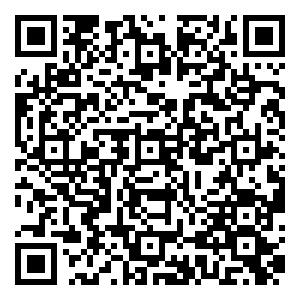LOAD-TRANSFER LAWS OF A SINGLE PILE AND DETERMINATION OF REASONABLE POSITIONS FOR GROUTING ON PILE SIDES
-
摘要: 为研究不同加载点及不同加载方向对单桩荷载传递特性的影响,进行了相同条件下的桩端无土顶压桩、桩端有土顶压桩和底托桩的室内模型试验,得到了不同加载方式下桩身轴力、桩侧摩阻力等分布规律。研究结果表明:达到负摩阻力极限值所需要的桩土相对位移比正摩阻力的小,不同加载位置显著影响桩侧摩阻力的分布形式,桩侧摩阻力最大值出现在距离加载点1/3桩长处。对于承受竖向荷载的抗压桩,应充分利用好中上部地层,对承受竖向抗拔荷载的底托桩,应充分利用好中下部地层。为提高单桩竖向承载力进行桩侧注浆时,对于抗压桩,注浆位置宜取在桩的中上部分,而对于底托抗拔桩,注浆位置则宜取在桩的中下部分。Abstract: To study the influence of different loading points and different loading directions on the load transfer characteristics of a single pile, model tests of the axial compressive piles without or with soil at pile tips and bottom-lifted piles in the same conditions were conducted. Then the laws of axial forces and side friction in different loading modes were obtained. The results showed that the relative limit displacement between piles and soil required for negative frictional resistance was smaller than that of positive frictional resistance. Loading positions significantly influenced on the evoluation of pile side friction, and the maximum of the pile side friction appeared at the one-third length of piles away from the loading point. For axial compressive piles, the middle and upper strata should be fully utilized; and for bottom-lifted piles, the middle and lower strata should be fully utilized. When grouting was inplemented on the sides of piles to improve the vertical bearing capacity, the grouting positions beside the upper and middle parts of pile shafts for axial compressive piles and beside the middle and lower parts of the pile shafts for the bottom-lifted piles should be considered.
-
Key words:
- axial compressive pile /
- bottom-lifted pile /
- side friction of pile /
- load transfer /
- grouting position
-
[1] 娄学谦,王幸,吕述晖,等. 软岩地层灌注桩抗压与抗拔承载性分析[J]. 水运工程,2018(3):165-170. [2] 张世民,王虹波,张四凤,等. 后压浆桩抗压与抗拔现场对比试验[J]. 长江科学院院报,2018,35(3):135-138. [3] 陈小强,赵春风,甘爱明. 砂土中抗拔桩与抗压桩模型试验研究[J].岩土力学,2011,32(3):738-744. [4] 陈昌富,黎玉琪. 考虑桩土界面相对位移与界面外土体剪切变形抗拔桩荷载传递分析[J]. 公路工程,2018, 43(3):35-39. [5] DESHMUKH V B, DEWAIKAR D M, CHOUDHURY D. Computations of Uplift Capacity of Pile Anchors in Cohesionless Soil[J]. Acta Geotechnical, 2010(5):87-94. [6] SAEEDI A, KASHKOOLI A, BAZIAR M H. Prediction of Uplift Pile Displacement Based on Cone Penetration Tests (CPT)[J]. Geotechnical and Geological Engineering, 2014, 32(4):1043-1052. [7] ASHOUR M, ALTAHRANY A, ABBAS A. Development of T-Z Curve for Piles in Sands Under Uplift Force[J]. Innovative Infrastructure Solutions, 2019(4):24. [8] HONG W P, CHIM N. Prediction of Uplift Capacity of a Micro-Pile Embedded in Soil[J]. KSCE Journal of Civil Engineering, 2015, 19(1):116-126. [9] 钱建固,马霄,李伟伟,等. 桩侧注浆抗拔桩离心模型试验与原位测试分析[J]. 岩土力学,2014, 35(5):1241-1246. [10] 王向军. 基于试桩试验的桩侧注浆抗拔桩承载变形特性的荷载传递法[J]. 岩土力学,2015,36(增刊2):321-326. [11] 刘源,蒋玉川. 自平衡试桩法上段桩有限元研究[J]. 土工基础,2018, 32(1):55-58. [12] 邵光辉,赵志峰,吴正余. 托底抗拔桩承载特性的模型试验研究[J]. 岩土工程学报,2016, 38(6):1140-1146. [13] ZHENG A R. Analysis on Pile Testing Results of Post-Grouting Bored Pile[J]. Earth and Environmental Science, 2017,61:012120. [14] NGUYEN V L, NIE L, ZHANG M. Method Cement Post-Grouting to Increase the Load Capacity for Bored Pile[J]. Research Journal of Applied Sciences, Engineering and Technology,2013,5(19):4727-4732. [15] 中华人民共和国建设部.建筑桩基技术规范:JGJ 94-2008[S].北京:中国建筑工业出版社,2008. [16] 中华人民共和国住房和城乡建设部.建筑桩基检测技术规范:JGJ 106-2014[S].北京:中国建筑工业出版社,2014. -

 点击查看大图
点击查看大图
计量
- 文章访问数: 178
- HTML全文浏览量: 32
- PDF下载量: 5
- 被引次数: 0

 登录
登录 注册
注册 E-alert
E-alert

 登录
登录 注册
注册 E-alert
E-alert


 下载:
下载:
